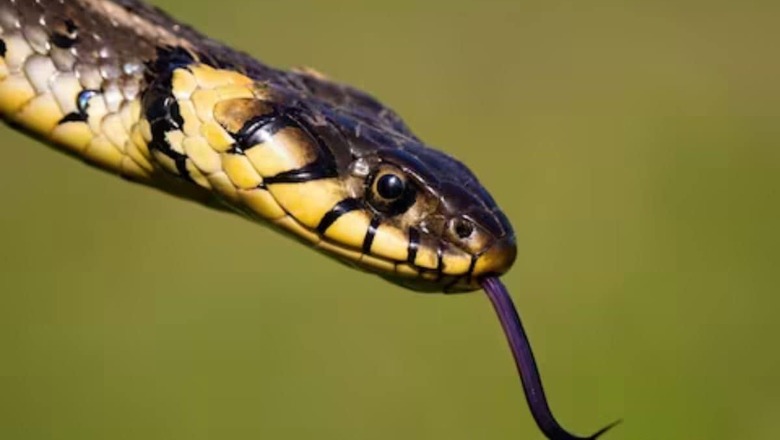
views
Snakes, renowned for their venomous nature, often captivate observers with the menacing yet intriguing behaviour of repeatedly flicking their tongues. Ever wondered why these reptiles engage in this peculiar action? According to a report from Live Science, the primary reason behind a snake flicking its tongue is to taste the surrounding environment and gather vital information about its surroundings.
Snakes possess limited hearing and sight capabilities, making their sense of smell crucial for survival. By extending their tongues, snakes sample the air, detecting odours and potential threats nearby. The act of tongue-flicking allows snakes to assess whether the environment is favourable or poses risks. This heightened olfactory sense aids them in navigating their surroundings and identifying potential predators.
When a snake flicks its tongue, it collects odours present in small moisture particles suspended in the air. The next step involves inserting the tongue into a specialised organ known as the vomeronasal, or Jacobson organ, located in the upper part of the snake’s mouth. This organ enables snakes to detect airborne chemicals, functioning similarly to the human sense of smell. The barbed tongue prongs fit snugly into two Jacobson holes, facilitating the transfer of collected particles.
Once the tongue deposits these particles into the vomeronasal organ, direct signals are sent to the snake’s brain. Chemicals present in the particles attach to corresponding molecules, allowing the snake to discern between different scents. This sophisticated mechanism aids in the identification of potential prey, predators, or mates. The sensory cells involved in this process play a crucial role in the snake’s ability to interpret its olfactory environment.
Interestingly, the vomeronasal organ is not exclusive to snakes; various animals, including cats, horses, and humans, possess it. However, in humans, its activity is not as pronounced. For animals and reptiles, this organ serves as a super smell detector, contributing to their survival instincts. Lizard species such as chameleons and iguanas also exhibit tongue-flicking behaviour, as they, too, possess this specialised organ.
The fascinating ritual of snakes flicking their tongues is an integral part of their survival strategy, allowing them to navigate their surroundings, detect potential dangers, and distinguish between various scents—an evolutionary adaptation that underscores the complexity of their sensory capabilities.

















Comments
0 comment